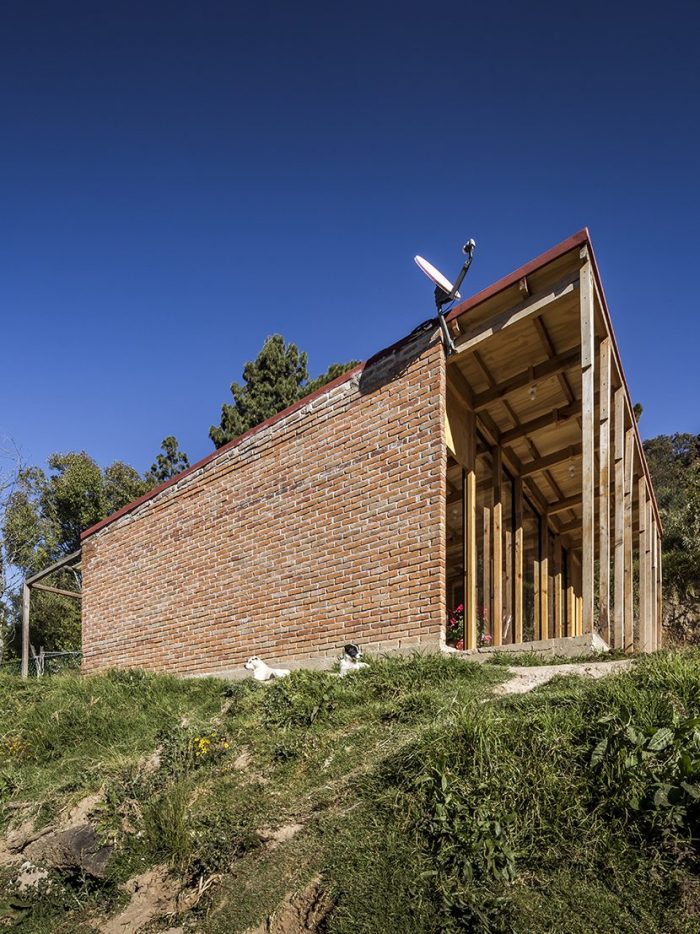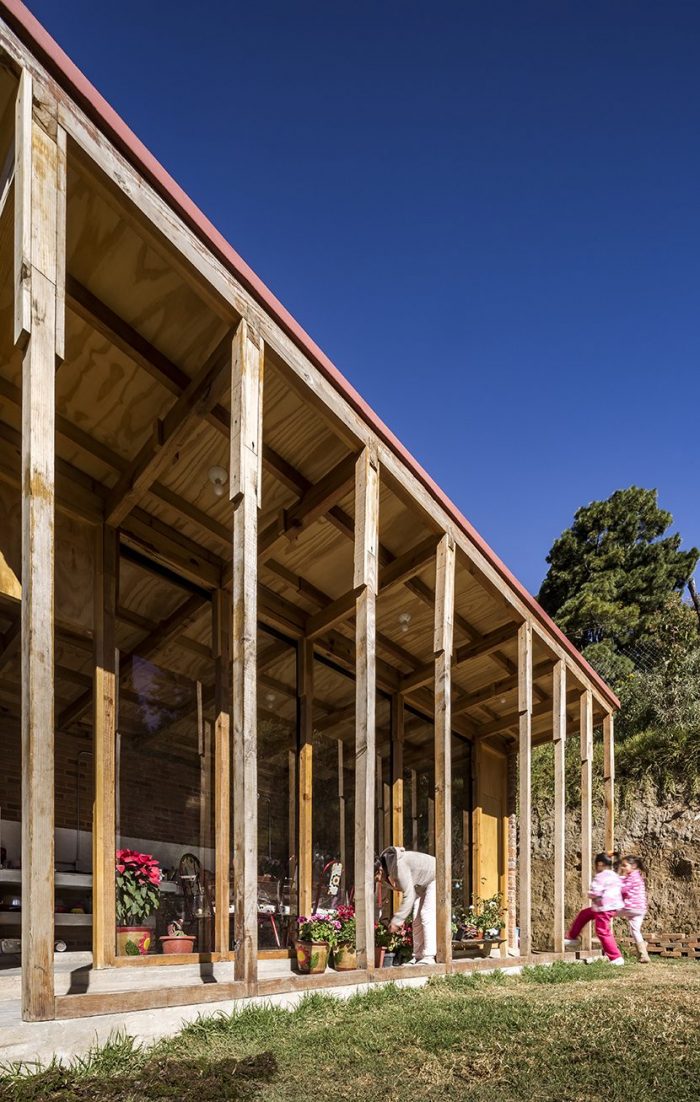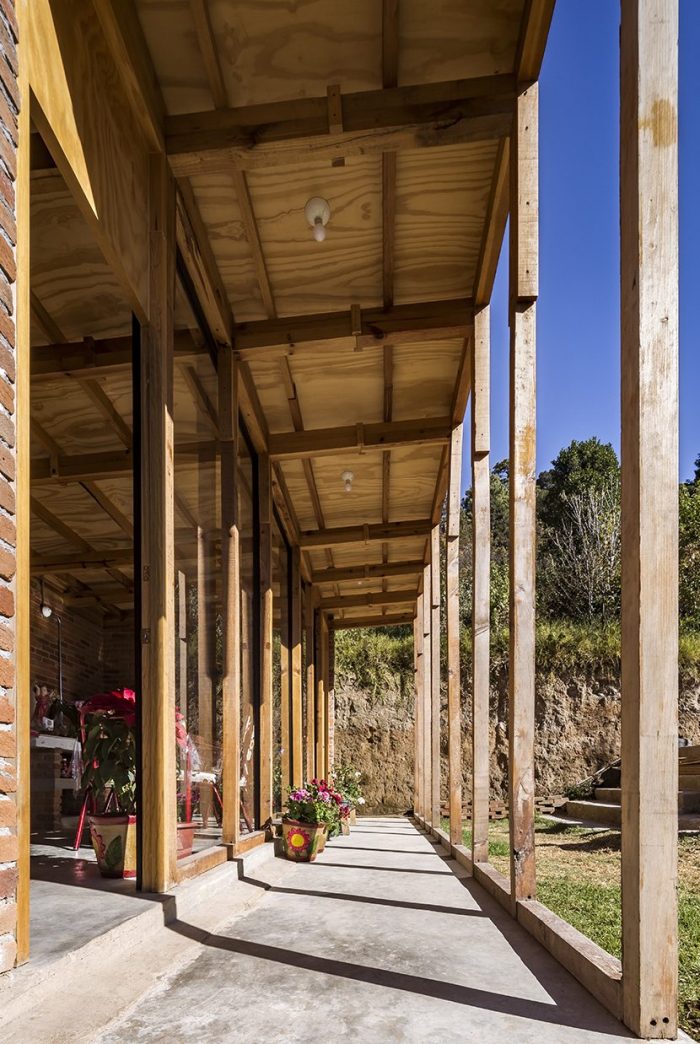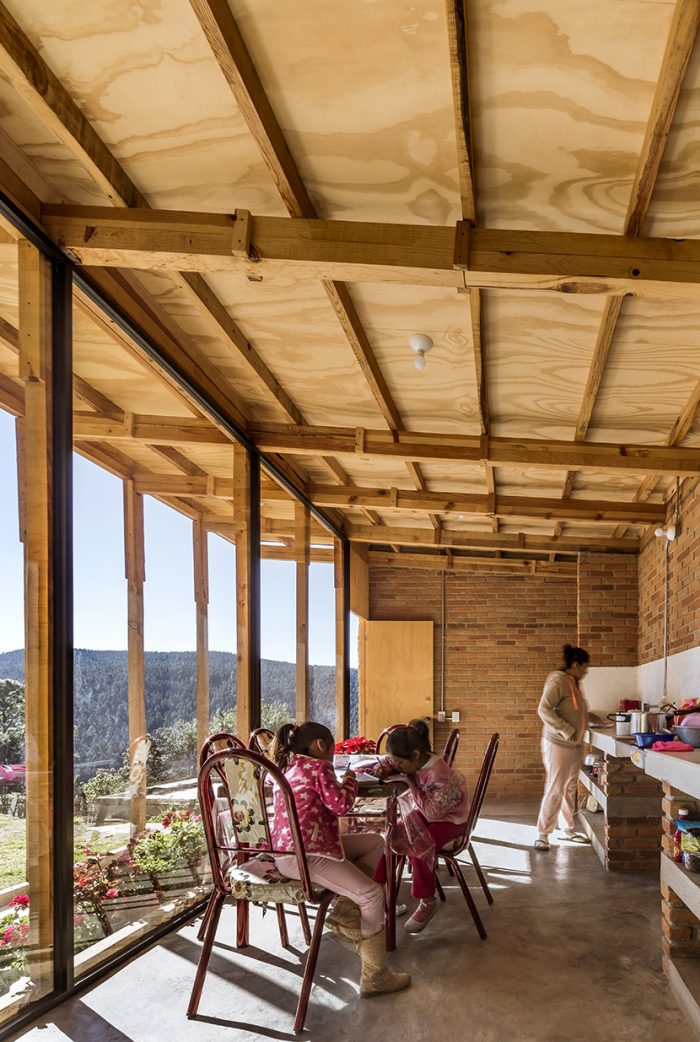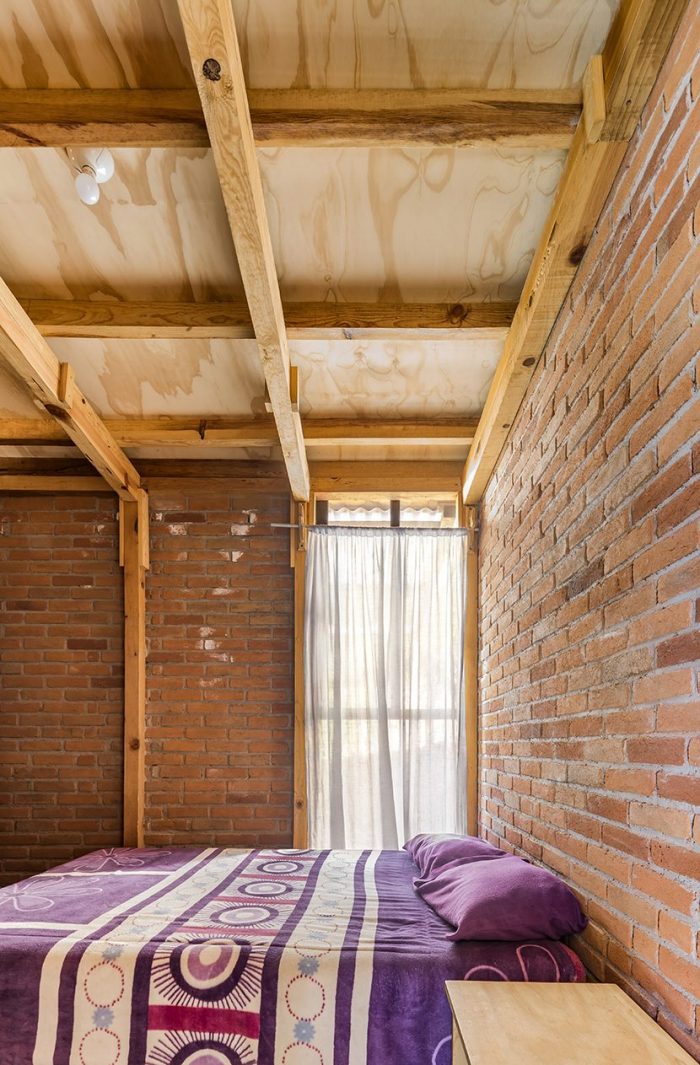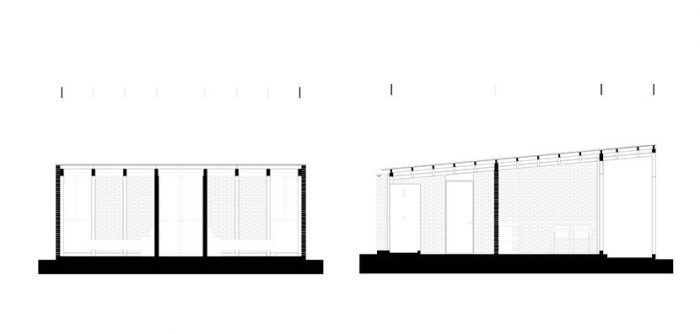由建筑师曼努埃尔·塞万提斯(Manuel Cervantes)领导的墨西哥研究已与Infonavit(国家工人住房协会)合作,在墨西哥州萨拉萨尔社区完成了这所房子的建造,这是一项旨在改善辅助自救能力的研究活动。墨西哥农村地区的住房生产。
正确进行房屋的生物气候运行的最重要的要点之一是在寒冷季节优化太阳辐射的影响和房屋的密封保护;从这种情况开始,房屋的方向总是与屋顶向南倾斜。该程序由3个块组成;房子有一个社交区,2间卧室,浴室和厨房。
尽管气候变化,但住房计划旨在消除内部与外部的限制,产生可根据当前气候条件扩展的空间。这种灵活性使您可以将其整合到家庭体验中,从而充分利用整个资产。同样,当物产条件不理想时,植被起着至关重要的作用。这种策略允许使用具有自然入射光的植被。
The Mexican study led by the architect Manuel Cervantes has worked with Infonavit (Institute of the National Housing Fund for Workers) to complete this house in the community of Salazar, State of Mexico, which represents a research exercise for the improvement of the assisted self-production of housing in rural areas of Mexico.
One of the most important points for the proper bioclimatic operation of the house is to optimize the impact of solar radiation and hermetic protection of the house in cold seasons; Starting from this condition, the orientation of the house is always with the inclination of the roof to the south. The program is made up of 3 blocks; the house has a social area, 2 bedrooms, bathroom and kitchen.
Despite the climate, the housing scheme aims to eliminate the limits of the interior with the exterior, generating spaces that can be extended according to the climatic conditions of the moment. This flexibility allows you to take advantage of the entire property by incorporating it into the home experience. In the same way, vegetation plays a fundamental role when the conditions of the property are not ideal; This strategy allows to use the vegetation with a natural block of the solar incidence.
Deign: Manuel Cervantes Estudio & Infonavit
Photography: César Bejar


